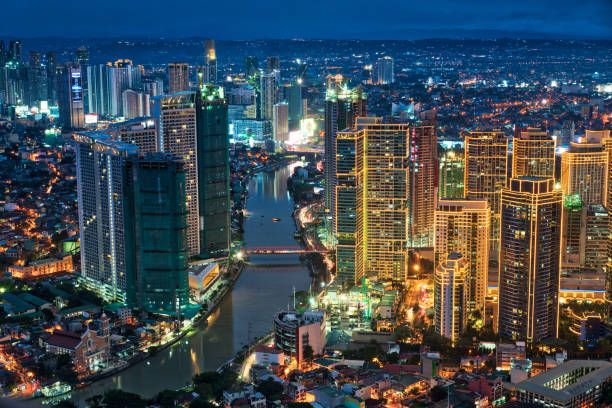The Philippine Atmospheric Geophysical and Astronomical Services Administration (Pagasa) is closely monitoring cloud bands that may enter the Philippine Area of Responsibility (PAR) as a low-pressure area (LPA) over the weekend. Pagasa weather specialist Benison Estareja reported that these cloud formations were spotted over the central Pacific Ocean and are expected to develop into an LPA within the next 24 hours.
As of now, Pagasa’s forecast indicates that there are no weather disturbances entering PAR until Friday. However, the cloud clusters outside PAR have the potential to develop into an LPA and enter the country, most likely over the weekend,” Estareja added.
Once inside PAR, the LPA is expected to bring rainfall, particularly over the Visayas and Mindanao regions, according to the state-run weather agency’s advisory.
Currently, the majority of the country is experiencing generally fair weather conditions, with the northeast monsoon, locally known as “amihan,” affecting Northern and Central Luzon. However, the easterlies, combined with localized thunderstorms, are causing partly cloudy to overcast skies with isolated rain showers or thunderstorms, especially in the afternoon or at night over Metro Manila and the rest of the country.
It is important to note that weather conditions can change rapidly, and it is advisable to stay updated with the latest forecasts and advisories from Pagasa. Taking necessary precautions and staying informed about potential weather disturbances can help ensure the safety and well-being of individuals and communities.
For international readers, understanding the Philippine weather system and terminologies is essential in comprehending the situation. Pagasa is the national meteorological and hydrological agency in the Philippines responsible for weather forecasting, flood control, astronomical observations, and time service.
The Philippine Area of Responsibility (PAR) is an area designated by Pagasa for monitoring and issuing weather bulletins and warnings. It encompasses the entire Philippines and its surrounding waters.
A low-pressure area (LPA) refers to an atmospheric disturbance characterized by low atmospheric pressure compared to its surrounding areas. LPAs can develop into tropical depressions, tropical storms, or even typhoons depending on various factors such as sea surface temperatures and atmospheric conditions.
The northeast monsoon, locally known as “amihan,” is a prevailing wind system that brings cooler and drier air from the northeast during the months of November to March. It is associated with the winter season in the Northern Hemisphere.
The easterlies, on the other hand, are prevailing winds that blow from the east, bringing warm and moist air. They are more common during the summer months and can contribute to the formation of localized thunderstorms.
By staying informed about weather conditions and understanding the local weather terminologies, individuals can make informed decisions and take appropriate actions to ensure their safety and well-being.
In conclusion, Pagasa is closely monitoring cloud bands that may develop into a low-pressure area and enter the Philippine Area of Responsibility over the weekend. While generally fair weather conditions persist in most parts of the country, it is important to stay updated with the latest forecasts and advisories from Pagasa. Understanding the Philippine weather system and terminologies can help international readers comprehend the situation and make informed decisions.







